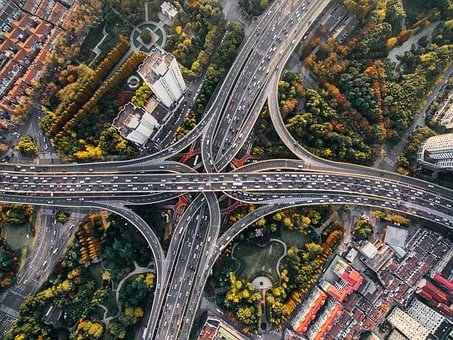
Welcome to 2017, where it seems like the something chosen leaders can perhaps, perhaps, possibly agree on is that America's infrastructure is busted. That, and that the only method to spruce things up is by flinging a trillion dollars at the country's roadways, waterways, and broadband networks.
The real question, then, is the best ways to spend that (still extremely theoretical) avalanche of bipartisan money. "Decision makers need to know exactly where to wisely invest those dollars so that we don't piss away $1 trillion on solving issues that do not exist or in locations that won't get you the greatest return," says Michael Load, who researches intelligent traffic systems at the University of Maryland.In the interest of keeping this conversation workable, we'll reserve the cracked levees, overflowing landfills, broadband-free regions in the meantime, and concentrate on falling apart bridges, potholed roadways, and choking traffic. You know, the ground transport stuff.Here's where to begin, and where to go from there.Patchwork Step one: Repair work.
States need to ditch the habit of investing more on structure and widening new roads-- things that, reminder, do not always aid with traffic-- than on repairing the ones they have actually already got. Between 2009 and 2011, inning accordance with Smart Development America, states shelled out$20.4 billion on new stretches of asphalt and just$16.5 billion to preserve the other 99 percent of the system. You can see why: Cutting a ribbon on a new stretch of interstate produce a way much better news release than filling another hole. Wiring It Up OK, however the country still certainly requires brand-new things. And if it's going to construct them, it must think about the ways in which transportation is changing."Any road or transit that you redo-- even if you're upgrading it-- you ought to be utilizing that opportunity to embed innovations," states Rob Atkinson, president of the Information Technology and Development Structure, a DC believe tank."For a bit of cash, you might make this facilities intelligent, "says Atkinson, and though he suggests"a bit" in big-money facilities terms, he's not kidding. The US Government Accountability Workplace estimates rigging adjusts fees based onhow lots of individuals desire to utilize the road at a given time.(Have you heard about this supply and demand thing?)These changes would be unpopular, and may get a few folks un-elected. They're clever, required adaptions to a changing world.Power to the People Obviously, it's challenging for federal stars to direct all this from high atop their overload. They should not attempt. A few of the most intelligent infrastructure planning and spending should and will occur at the local level-- a departure from the top-down, interstate-driven infrastructure of the last century.
References:
Michael Load
Artikinson
Smart Development America
Channel365
Hi! I am a robot. I just upvoted you! I found similar content that readers might be interested in:
http://www.channelthreesixfive.com/2017/05/29/how-to-fix-us-infrastructure-with-1-trillion/